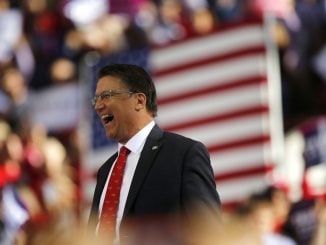
WASHINGTON, D.C. — U.S. employers added just 134,000 jobs in September and the unemployment rate fell to 3.7 percent, the lowest level since 1969. The jobs total marked the lowest monthly growth in a year. The figure was likely lowered by Hurricane Florence.
Hurricane Florence struck North and South Carolina in the middle of September and closed thousands of businesses. A category that includes restaurants, hotels and casinos lost jobs for the first time since last September, when Hurricane Harvey had a similar effect.
Average hourly pay increased 2.8 percent from a year earlier in September.
September extended the longest streak of hiring on record, with millions of Americans having gone back to work since the Great Recession. Healthy consumer and business spending has been fueling brisk economic growth and emboldening employers to continue hiring. The September gain extended an 8½-year streak of monthly job growth.
Consumers, business executives and most economists are optimistic. Measures of consumer confidence are at or near their highest levels in 18 years. Retailers have begun scrambling to hire enough workers for what’s expected to be a robust holiday shopping season. A survey of service-sector firms, including banks, hotels and health care providers, found that they are expanding at their fastest pace in a decade.
Americans have continued spending steadily and appear to be in generally stable financial shape. Households are saving nearly 7 percent of their incomes — more than twice the savings rate before the recession. That trend suggests that a brighter economic outlook hasn’t caused consumers to recklessly build up unsustainable debt.
During the April-June quarter, the U.S. economy expanded at a 4.2 percent annual rate, the best in four years. Economists have forecast that growth reached a 3 percent to 3.5 percent annual rate in the July-September quarter.
The economy does have some weak spots. Sales of existing homes have fallen over the past year. A shortage of properties for sale, price increases, and higher mortgage rates are the primary factors slowing purchases. Auto sales have also slumped.
Other threats loom, too. The Federal Reserve last week raised the short-term interest rate it controls and predicted that it would continue to tighten credit into 2020 to manage growth and inflation. Over time, higher borrowing costs make auto loans, mortgages and corporate debt more expensive and can eventually slow the economy.
But for now, anticipating stronger growth — and perhaps higher inflation — investors have dumped bonds and forced up their yields. The yield on the government’s 10-year Treasury note, a benchmark for mortgages and other loans, has touched its highest level in seven years.

President Donald Trump’s trade policy could also affect the economy. The Trump administration recently announced a new trade pact with Mexico and Canada which eased some fears of North American trade skirmishes.



